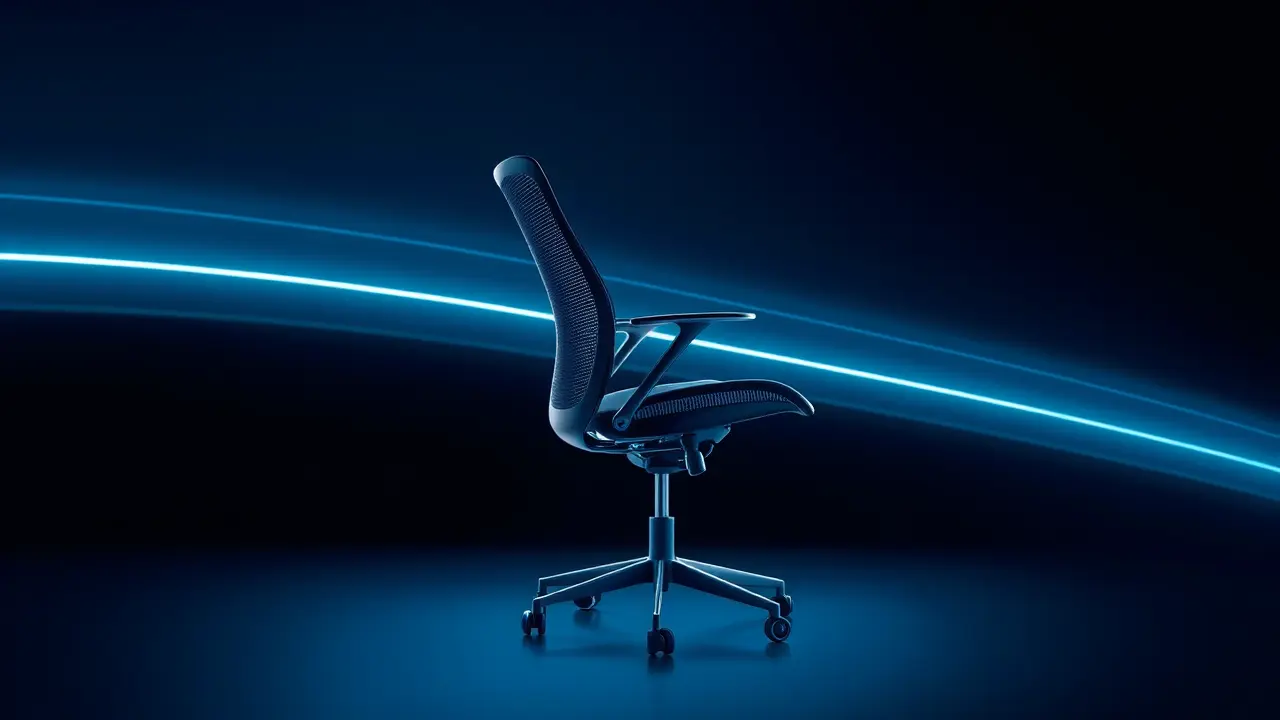
SciencemedicineMedical Technology
Levitask Vision Chair Challenges Traditional Ergonomic Design
AN
Andrew Blake
7 hours ago7 min read5 comments
The Levitask Vision Chair isn't just another piece of office furniture; it's a philosophical statement carved into steel and mesh, a direct challenge to a half-century of ergonomic dogma that has, arguably, left us more sedentary and prone to injury than ever before. For decades, the gold standard in office seating has been the 'ergonomic' chair, a marvel of adjustable lumbar supports, synchronized tilt mechanisms, and contoured seats, all designed with one primary goal: to support the human body in a single, supposedly optimal, static position.This paradigm, championed by giants like Herman Miller with their iconic Aeron chair, was built on the principle of cradling the sitter, of creating a comfortable cage. The Levitask Vision Chair, conceived by designer Klaus Kummer, throws that entire playbook out the window.Its core innovation is the promotion of an open hip angle, a design that encourages the pelvis to tilt forward, naturally aligning the spine into a posture more akin to standing or perching on a high stool than to the deep, reclined slump of traditional office chairs. This isn't about adding more adjustments; it's about fundamentally re-engineering the relationship between the body and the seat to foster constant, subtle movement.The science behind this is compelling. Prolonged static sitting, even in a well-supported position, has been linked by numerous studies to a host of issues, from compressed discs and weakened gluteal muscles to reduced circulation and metabolic slowdown.The body is designed for dynamism, not stasis. Kummer's design seems to draw inspiration from anthropological observations of how humans naturally rest in cultures without modern furniture—squatting, kneeling, or perching on the balls of their feet.By forcing the sitter into a more active, engaged position, the chair turns the act of sitting from a passive state into a low-grade core workout. The implications are vast, stretching beyond the individual user to the very architecture of our workspaces.If the future of sitting is dynamic, then the design of desks, monitor arms, and even office layouts must evolve in tandem. We could see a move away from fixed-height desks towards more prevalent sit-stand solutions, or the integration of 'perching' stations for quick tasks.The resistance from the established office furniture industry is predictable; billions of dollars and decades of marketing have been invested in the current model. Yet, the Levitask chair arrives at a pivotal moment, as the post-pandemic world re-evaluates the purpose and physicality of the office.It taps into a growing wellness-centric movement that prioritizes holistic health over mere comfort. Is it a panacea? Certainly not.Initial user reports suggest a significant adjustment period, where underutilized muscles protest the new demands placed upon them. But this discomfort is precisely the point—it's the feeling of muscles re-engaging, of the body being nudged out of its complacent slouch. In challenging 50 years of what it calls 'flawed ergonomics,' the Levitask Vision Chair does more than just offer a new product; it forces a long-overdue conversation about whether our pursuit of comfort in the workplace has, ironically, been making us profoundly uncomfortable all along.
#ergonomic chair
#open hip angle
#dynamic sitting
#posture
#design innovation
#featured
Stay Informed. Act Smarter.
Get weekly highlights, major headlines, and expert insights — then put your knowledge to work in our live prediction markets.
Related News
© 2025 Outpoll Service LTD. All rights reserved.





